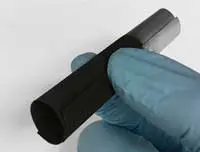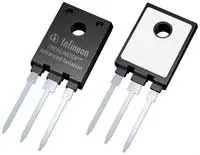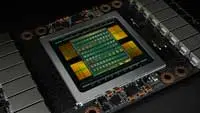Electronics News
Archive : 16 May 2017 год
 Electroplating lithium-ion battery cathodes could result in high-quality, high-performance battery materials, as well as flexible and solid-state batteries, according to researchers from the University of Illinois, Nanjing University and Xerion Advanced Battery.
Electroplating lithium-ion battery cathodes could result in high-quality, high-performance battery materials, as well as flexible and solid-state batteries, according to researchers from the University of Illinois, Nanjing University and Xerion Advanced Battery.
“This is an entirely new approach to manufacturing battery cathodes, which results in batteries with previously unobtainable forms and functionalities,” claimed Illinois Professor Paul Braun.
The team pointed out that traditional lithium-ion battery cathodes use lithium-containing powders formed at high temperatures. The powder is mixed with gluelike binders and other additives into a slurry, which is spread on a thin sheet of aluminium foil and dried. The slurry layer needs to be thin, so the batteries are limited in how much energy they can store.
The glue also limits performance. “The glue is not active. It doesn’t contribute anything to the battery and it gets in the way of electricity flowing in the battery,” said Hailong Ning, director of R&D at Xerion. “You have all this inactive material taking up space inside the battery, while the whole world is trying to get more energy and power from the battery.”
The researchers’ solution was to electroplate lithium materials directly onto the aluminium foil. This, the team claims, provides 30% more energy than a conventional cathode, as well as charging more quickly.
“This method opens the door to flexible and 3D battery cathodes, since electroplating involves dipping the substrate in a liquid bath to coat it,” said Nanjing Professor Huigang Zhang.
The researchers demonstrated the technique on carbon foam, as wel as on foils and surfaces with different textures, shapes and flexibility. “These designs are impossible to achieve by conventional processes,” said Prof Braun. “But what’s really important is that it’s a high-performance material and nearly solid. By using a solid electrode, rather than a porous one, you can store more energy in a given volume. At the end of the day, people want batteries to store a lot of energy.”
Author
Graham Pitcher
Source: www.newelectronics.co.uk
 A packaging technology for IGBTs developed by Infineon Technologies is said to support better thermal performance and simpler manufacturing.
A packaging technology for IGBTs developed by Infineon Technologies is said to support better thermal performance and simpler manufacturing.
Trenchstop Advanced Insulation has the same footprint as a standard TO-247, but provides 100% insulation, according to Infineon, while eliminating the need for thermal insulation films or thermal grease. Better heat transfer from the IGBT chip to the heat sink increases power density, reliability and reduces system and manufacturing costs.
The thermal resistance of the new housing is said to be 50% less than in a TO-247 FullPak and 35% lower than in a standard TO-247 with insulation film. This is said to result in a 10°C lower operating temperature. In addition, a coupling capacity of 38pF improves EMI behaviour and enables smaller filters to be used.
The Trenchstop Advanced Isolation package will be available in Q3 2017. The portfolio will initially feature IGBTs with power ratings ranging from 40A to 90A operating at 600V.
Author
Graham Pitcher
Source: www.newelectronics.co.uk
 NVIDIA has unveiled Volta, which it says is the most powerful GPU computing architecture available. Created to support artificial intelligence and high performance computing, device features 21billion transistors and is said to deliver the equivalent performance of 100 CPUs for deep learning applications.
NVIDIA has unveiled Volta, which it says is the most powerful GPU computing architecture available. Created to support artificial intelligence and high performance computing, device features 21billion transistors and is said to deliver the equivalent performance of 100 CPUs for deep learning applications.
“Deep learning has insatiable demand for processing power,” said NVIDIA’s CEO Jensen Huang. “Thousands of NVIDIA engineers spent more than three years crafting Volta to help meet this need, enabling the industry to realise AI’s life changing potential.”
Volta is said to offer five times the peak TFLOPS performance of Pascal, the current NVIDIA GPU architecture, and 15 times the performance of the two year old Maxwell architecture.
The architecture features 640 Tensor Cores, with CUDA cores and Tensor Cores paired to provide what the company calls the performance of an AI supercomputer in a single GPU. Also included is the NVLink high-speed interconnect, linking GPUs and CPUs, with up to twice the throughput of the prior generation NVLink. Memory operations are supported by the 900Gbyte/s HBM2 DRAM interface, developed in collaboration with Samsung.
The company also announced the Volta based Tesla V100 data centre GPU, targeted at AI inferencing and training, as well as for accelerating high performance computing and graphics workloads.
Author
Graham Pitcher
Source: www.newelectronics.co.uk

